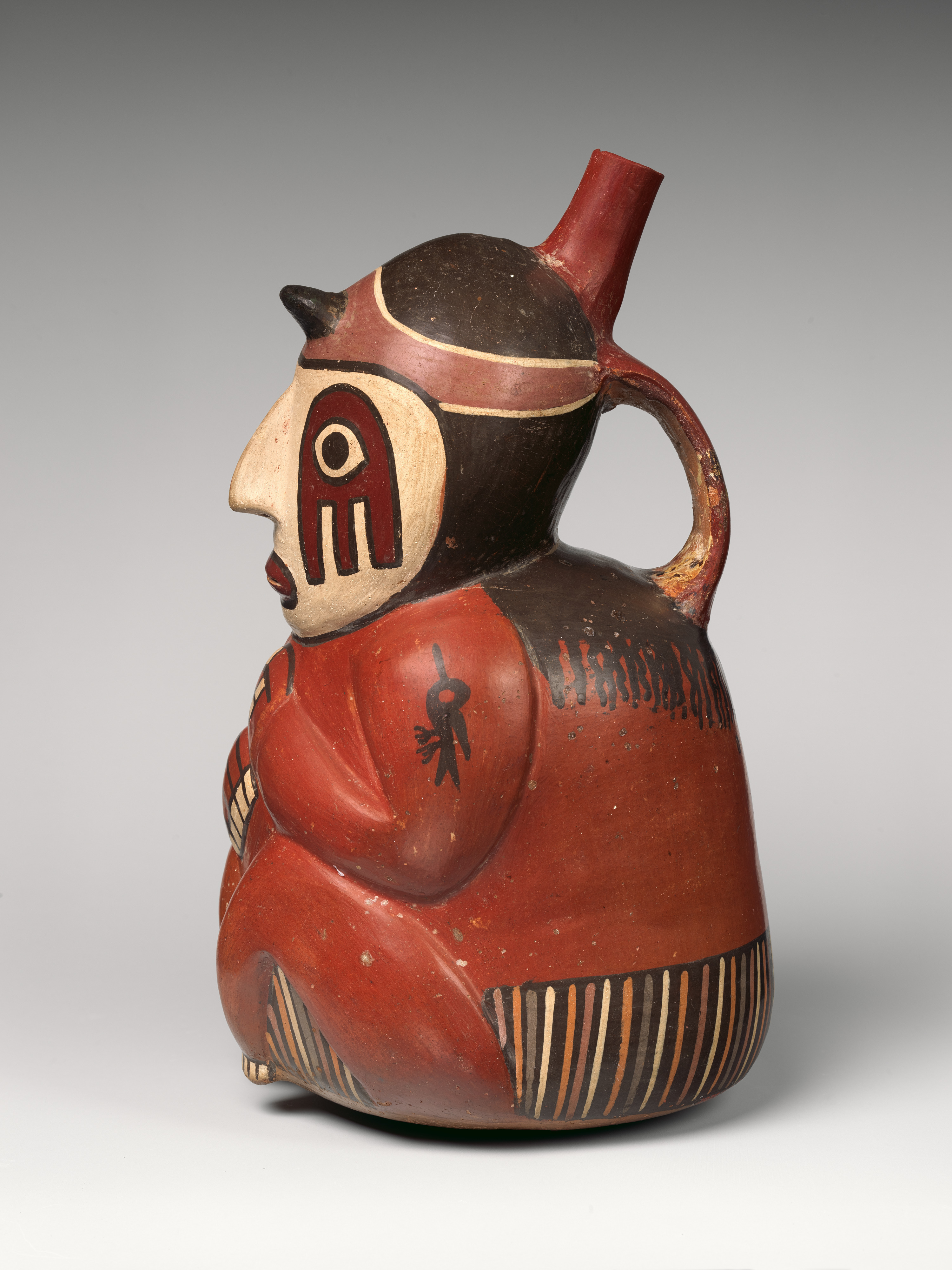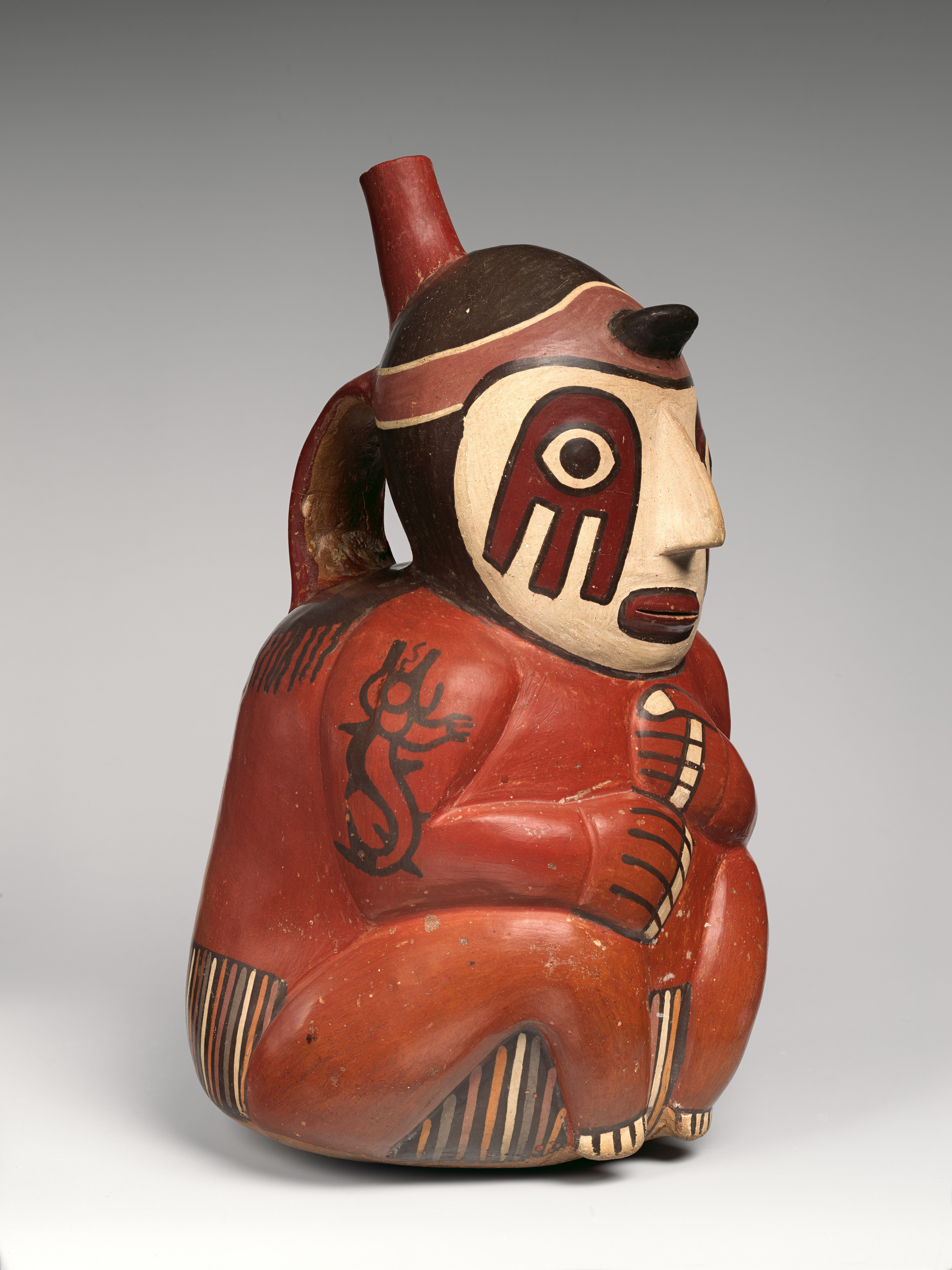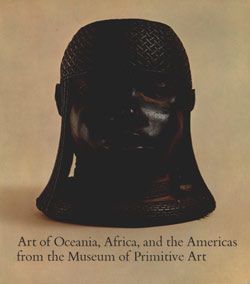Bottle with seated figure
Not on view
Unlike their northern counterparts, who used two-piece ceramic molds for manufacturing vessels, Nazca potters shaped containers by coiling and modeling. Figure vessels like the present example are rare and have an early date in the Nazca ceramic sequence, which lasted for at least 700 years. This engaging polychrome bottle takes the shape of a seated, compact human figure. It has a single spout and strap handle. The large head sits atop the broad shoulders, and the figure's legs are pulled close to the body, with arms and hands held tightly to the chest. Details such as fingers, toes, nails, and facial features are geometricized. The eyes and mouth are slightly raised, while prominent are the nose and a protuberance on the forehead. This mysterious knob may be a reference to fishermen, who are often shown with such a feature. The figure wears a head cover and a striped hipcloth. On his left upper arm is a stylized long-beaked bird, probably a sea bird, and on his right an anthropomorphized fish, perhaps a killer whale or shark. Marine imagery features prominently in all Nazca art, reflecting the economic importance of ocean resources. A source of constant wealth as well as danger, the sea played a major role in myths of all coastal peoples in the Andes.
This image cannot be enlarged, viewed at full screen, or downloaded.
This artwork is meant to be viewed from right to left. Scroll left to view more.






